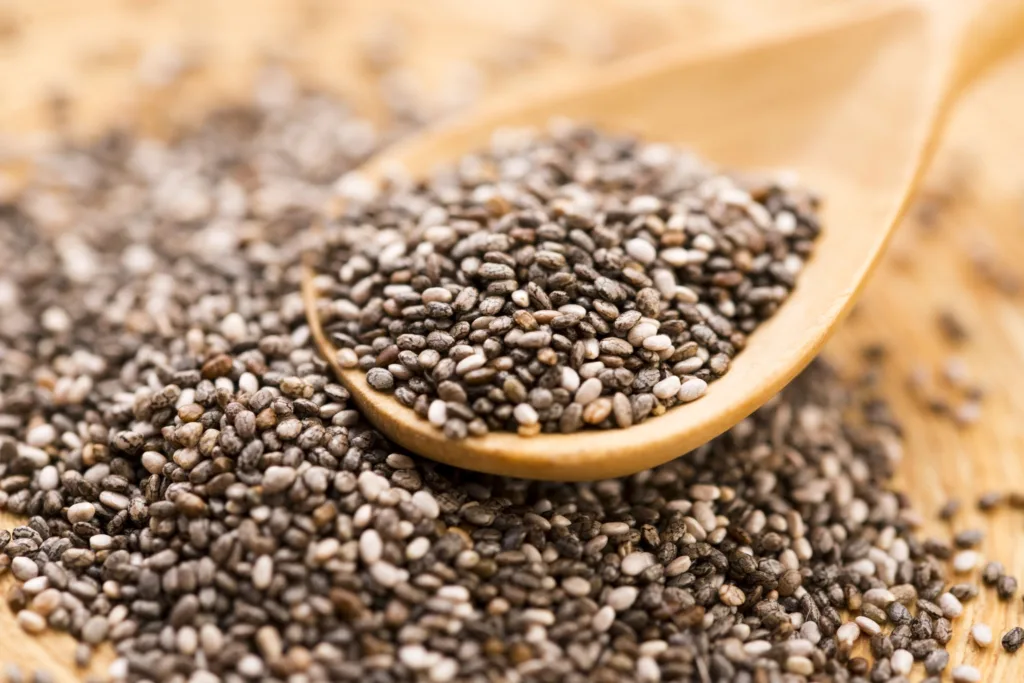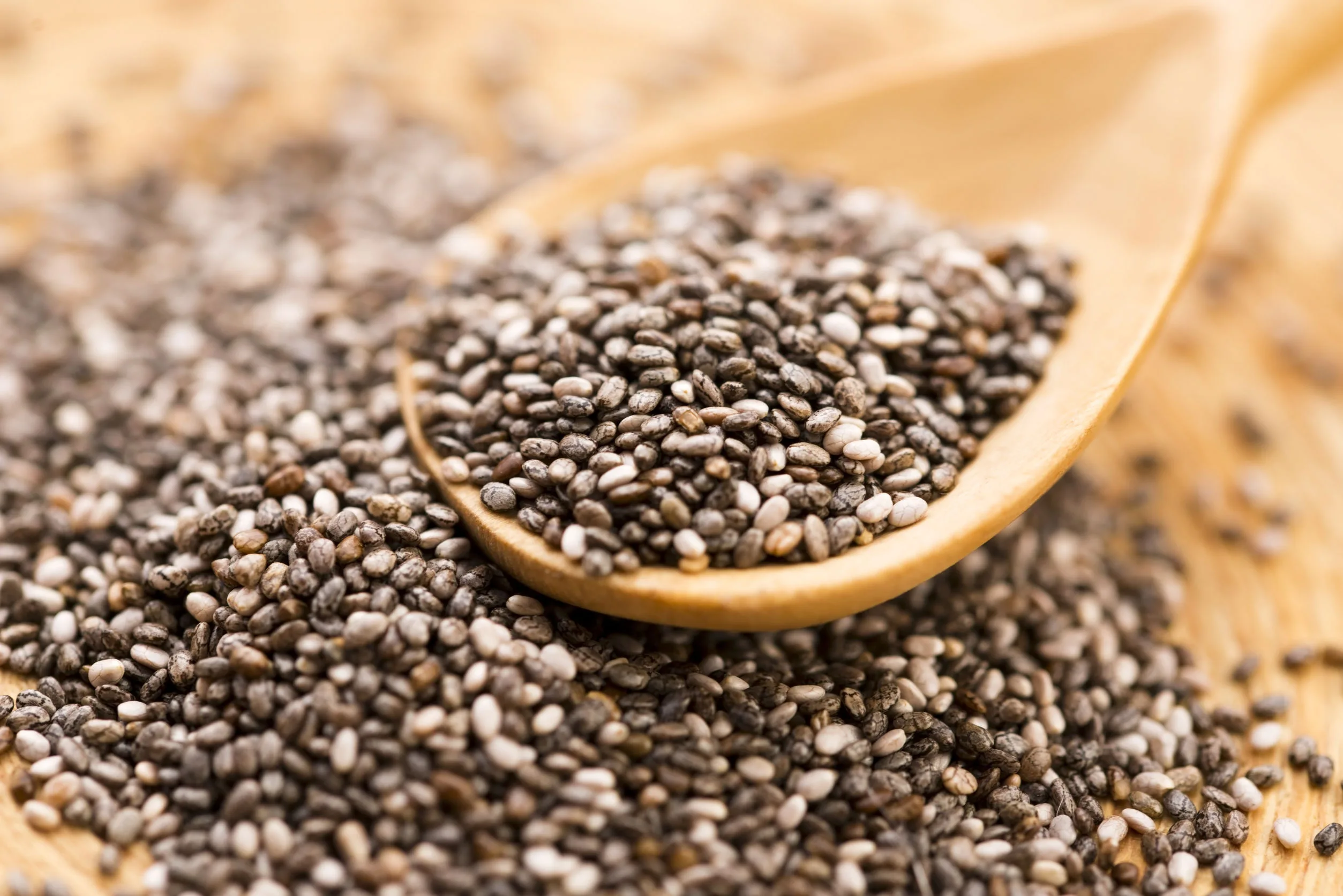In the relentless pursuit of shedding that persistent belly fat, even the most dedicated crunches might leave you frustrated. It’s not just a matter of aesthetics – the deep-seated visceral fat in the abdominal region is associated with a range of health risks, including metabolic syndrome, heart disease, and diabetes. If you’re seeking a simple and natural solution, look no further than chia seeds. These unassuming little wonders pack a powerful nutritional punch and might just hold the key to reducing that stubborn belly fat. Let’s dive into what the experts have to say about the potential role of chia seeds in achieving a trimmer waistline.

Grasping the Dynamics of Belly Fat
When we talk about belly fat, we’re not just referring to the visible subcutaneous layer beneath the skin. There’s another layer known as visceral fat, situated deeper within the abdomen and surrounding vital organs. Unlike subcutaneous fat, visceral fat is metabolically active and has a strong correlation with chronic health conditions.
Multiple factors contribute to the accumulation of excess belly fat, ranging from genetics and hormonal fluctuations to diet and a sedentary lifestyle. Stress-induced cortisol release can also contribute to fat storage around the midsection. Addressing this dangerous form of fat is crucial not just for appearances, but for overall health. This is where the potential benefits of chia seeds come into play.
Chia Seeds: A Nutritional Powerhouse for Weight Loss
Don’t let their small size deceive you – chia seeds are packed with a range of nutrients, boasting an impressive 11 grams of fiber per ounce. Additionally, they’re a source of protein, calcium, antioxidants, and omega-3 fatty acids like ALA. These nutritional attributes contribute to chia seeds’ potential as a tool for reducing belly fat.
Curbing Appetite: Chia seeds possess a unique quality – when mixed with liquids, their soluble fiber forms a gel-like substance that promotes a feeling of fullness, helping control overeating.
Regulating Blood Sugar: The combination of fiber, healthy fats, and protein in chia seeds helps stabilize blood sugar levels, preventing spikes that can lead to fat storage and increased hunger.
Boosting Metabolism: The omega-3 fatty acid ALA found in chia seeds may enhance fat burning, support muscle growth, and improve exercise efficiency.
Given these factors, chia seeds seem poised to play a significant role in combating belly fat. But what do experts in the field have to say about this potential?

Insights from Experts: Chia Seeds and Belly Fat Reduction
The opinions of nutritionists, dietitians, and researchers shed light on the potential relationship between chia seeds and belly fat reduction.
Dietitians emphasize chia seeds’ fiber content and adaptability. According to Melissa Morris, RD, “Chia seeds are an excellent way to introduce more fiber into your diet, which can help combat belly fat.” Andrea Miller, RD, suggests various ways to incorporate chia seeds into your meals, from smoothies to yogurt and salads.
Researchers, too, have delved into the connection between chia seeds and weight loss. A 12-week study involving obese individuals indicated that chia seed supplementation led to a reduction in visceral adipose tissue, a marker of belly fat. However, other studies suggest more modest effects.
It’s worth noting that while incorporating chia seeds into a balanced diet offers benefits, further research is necessary to ascertain their optimal use in belly fat reduction.
Chia Seeds and Hormonal Balance
Hormonal imbalances, especially involving cortisol and estrogen, can contribute to fat storage around the abdomen. Omega-3 fatty acids, a prominent component of chia seeds, might have a role to play in regulating these fat-storing hormones.
Leyla Mancilla, MS, RDN, explains that chia seeds’ anti-inflammatory omega-3s could aid in normalizing cortisol levels and potentially mitigate stress-related belly fat gain. Research also suggests that omega-3 intake could influence estrogen metabolism and contribute to a reduction in abdominal fat.
While these insights are promising, further studies are required to definitively establish the impact of chia seeds on hormonal factors influencing belly fat accumulation.

Chia Seeds and Gut Health
The balance of gut microbiota plays a crucial role in weight management and the reduction of abdominal obesity. Chia seeds contain prebiotic fiber, which nourishes beneficial gut bacteria associated with leanness.
Stacey Rosen, MD, a gastrointestinal specialist, points out that enhancing gut microbiome diversity through chia seed consumption could result in reduced inflammation, improved satiety signals, and a positive impact on the puzzle of belly fat. However, the research in this area is still evolving, and more studies are needed to fully understand the potential prebiotic effects of chia seeds.
Making Chia Seeds Part of Your Routine
Experts have weighed in with practical advice for incorporating chia seeds into your diet. Kara Lydon, RD, recommends a daily intake of 1-2 tablespoons of chia seeds as part of a balanced diet. They can easily be added to oatmeal, yogurt, smoothies, and salads.
Lisa DeFazio, RD, suggests pairing chia seeds with other belly-fat combating foods such as green tea, apple cider vinegar, and cinnamon for a potentially synergistic slimming effect.
Nevertheless, experts caution against placing undue reliance on chia seeds alone for weight loss results. Willow Jarosh, MS, RD, emphasizes that chia seeds should be viewed as a part of a broader wellness strategy.
The Holistic Approach: Key to Success
While chia seeds offer a range of benefits, it’s important to approach belly fat reduction holistically. Spencer Nadolsky, DO, a specialist in obesity medicine, stresses that there’s no magic bullet for reducing abdominal fat. A combination of a balanced diet, regular exercise, stress management, and quality sleep are all integral components.
The benefits of chia seeds are best harnessed when integrated into an overall healthy lifestyle. Consulting healthcare and nutrition professionals can help tailor a belly fat loss plan that’s safe, evidence-based, and tailored to your individual needs.
Navigating Misconceptions and Hype
In the world of online health advice, it’s easy for misconceptions and hype to take center stage. Some exaggerated claims about chia seeds’ fat-metabolizing abilities have surfaced. Kristen Smith, RD, cautions against unsubstantiated claims that suggest chia seeds can “melt belly fat” or exclusively target weight loss in the midsection.
Experts acknowledge the limitations of the existing body of evidence. Dr. Frank Hu, a nutrition scientist, underscores the need for larger, longer-term studies to determine optimal consumption levels and quantify the true efficacy of chia seeds.

A Comprehensive Approach to Success
In summation, the consensus among experts is that chia seeds indeed offer a range of nutritional benefits that can complement efforts to reduce belly fat. Their fiber, protein, antioxidants, and omega-3 content contribute to satiety, blood sugar control, hormonal regulation, and other factors related to abdominal fat reduction.
However, it’s crucial to remember that effectively reducing belly fat requires a comprehensive approach. Healthy eating habits, regular physical activity, sound sleep, and stress management are all essential components of a successful strategy. While chia seeds can be a part of this journey, they should be seen as a contributor rather than a panacea. Relying solely on chia seeds without addressing other aspects of a healthy lifestyle is unlikely to lead to significant reductions in belly fat.
Incorporate chia seeds thoughtfully into your dietary routine, but always prioritize a holistic wellness approach. The path to a slimmer, healthier waistline involves a combination of informed choices, evidence-based practices, and the guidance of healthcare professionals.
Thank you for reading this post, don't forget to subscribe to our free newsletter
!
